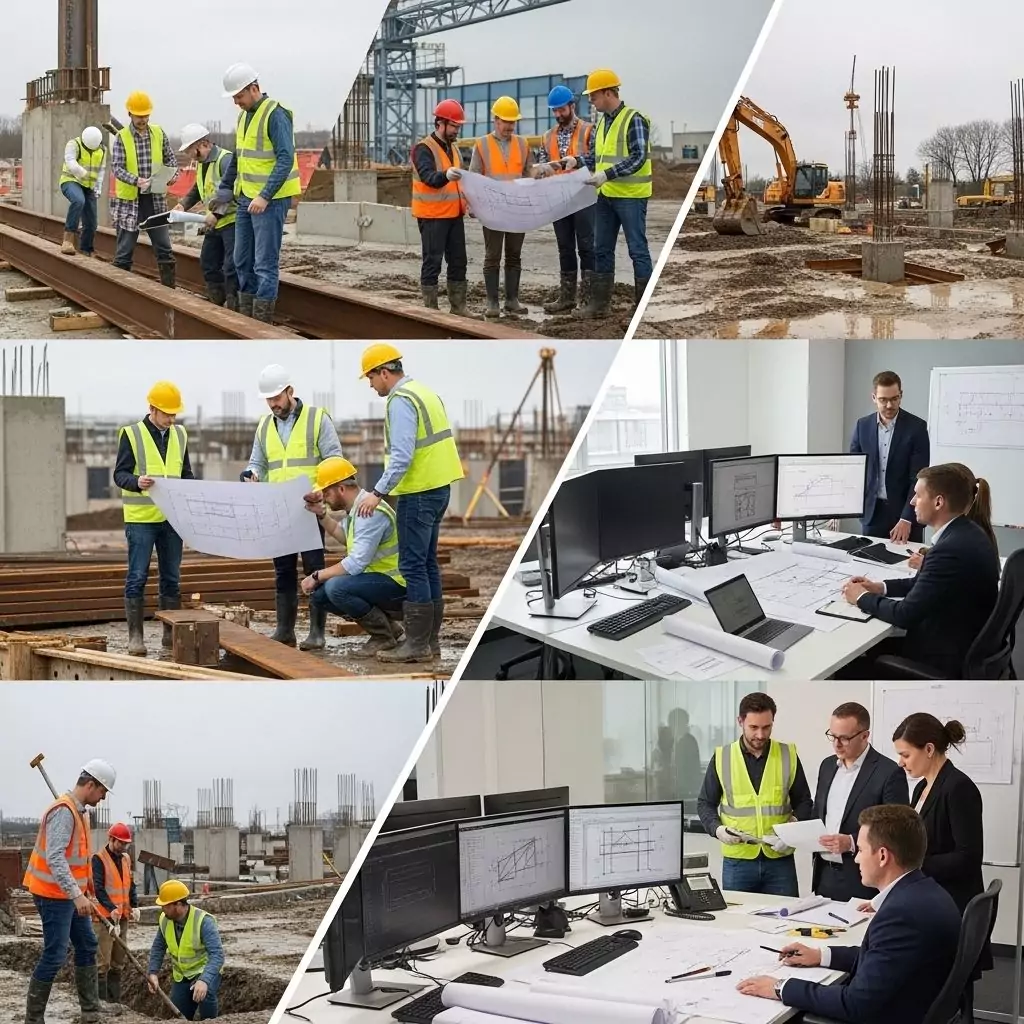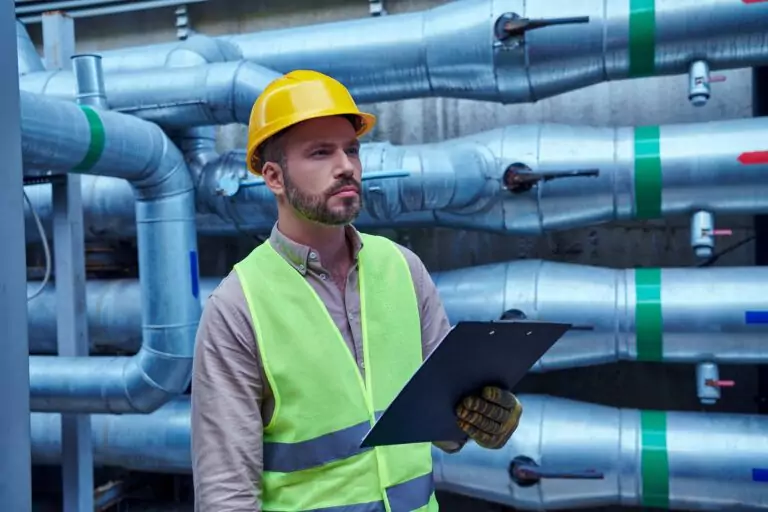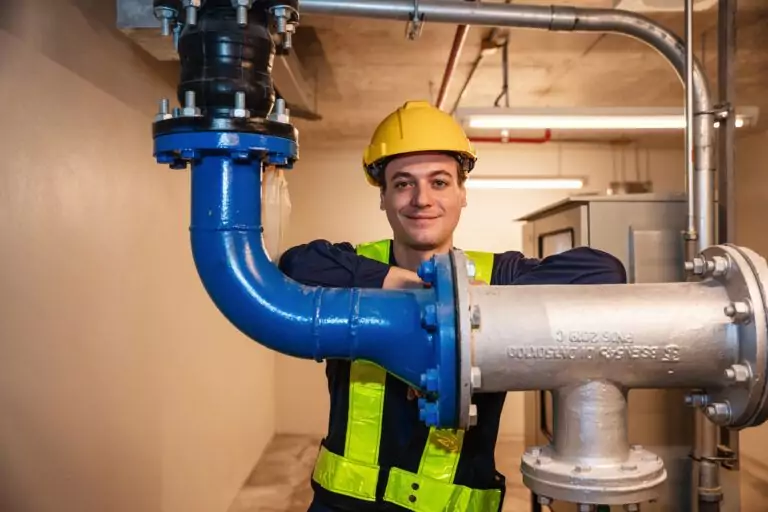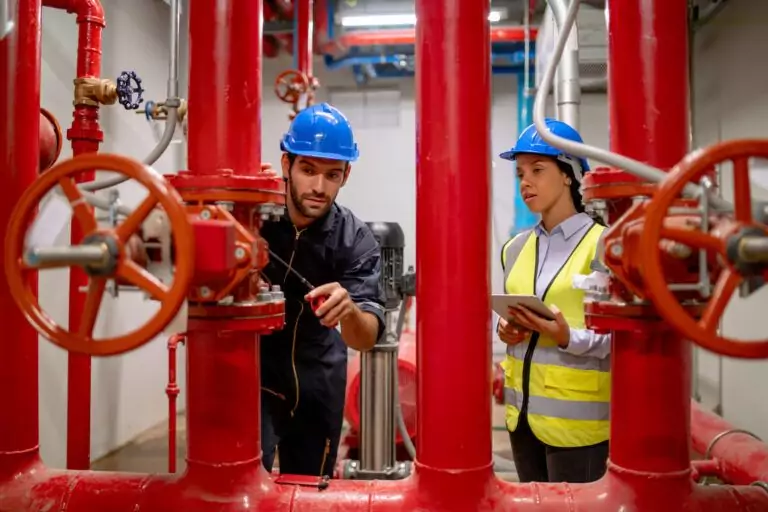People think structural and civil engineers just sit at desks performing structural calculations and load analysis all day. That’s a small fraction of the job.
The reality involves way more technical variety, project coordination, and problem-solving responsibilities. Client coordination calls and stakeholder meetings. Site visits and field inspections in mud and heat. Engineering software crashes right before deadlines. Contractor questions at 7 AM. Design changes that ripple through entire projects. And yes, calculations, but usually while juggling three other urgent tasks.
If you’re exploring these careers or hiring engineers, you need to understand what the work actually looks like. Not the textbook version. The real version where projects change daily and problem-solving happens in parking lots, conference rooms, and sometimes literally in trenches.
Civil engineering and structural engineering overlap in project execution but differ in important technical ways and specialised focus areas. Civil engineers handle infrastructure systems, site civil design, grading and drainage work, utility coordination, and broad multi-discipline project coordination. Structural engineers focus specifically on making sure buildings, industrial facilities, and load-bearing structures stand up safely under gravity loads, lateral forces, seismic demands, and environmental loading. Both disciplines collaborate closely on projects.
You’ll learn what engineers actually do during workdays, which industries need these skills, how the careers progress, and what compensation looks like across different experience levels.
What Civil Engineers Actually Do Beyond Roads and Bridges
Civil engineering gets reduced to “the people who design highways and bridges” in most conversations. That misses most of what the discipline covers.
Civil engineers solve infrastructure problems, site development challenges, and utility coordination issues. Municipal water supply systems and distribution networks. Wastewater collection, treatment facilities, and discharge systems. Stormwater drainage design, detention facilities, and runoff management. Site grading and earthwork. Utility coordination. Environmental compliance. These systems make communities and industries function, but they’re mostly invisible until something breaks.
The discipline acts as a foundation for other engineering work. You can’t design a building without civil engineers handling the site. Can’t build a petrochemical plant without civil infrastructure supporting it. Can’t develop property without civil analysis of drainage, access, and utilities.
The Broad Scope of Civil Engineering Practice
Civil engineering covers multiple technical specialisations under one professional umbrella and licensure structure. Transportation civil engineers design highways, roadway alignments, intersection geometry, and traffic control systems. Water resources engineers analyse, design, and manage hydraulic systems, stormwater infrastructure, and watershed drainage patterns. Geotechnical engineers analyse soil and foundation conditions. Environmental engineers address contamination and regulatory compliance.
This breadth creates infrastructure systems rather than isolated projects. A commercial development needs site civil design that brings together grading, utilities, stormwater, parking, and landscaping into one coordinated system.
Projects balance technical requirements against environmental impacts, social needs, economic constraints, and political realities. Building a highway involves conducting ecological studies, engaging with the community, acquiring right-of-way, developing funding strategies, and planning for decades of maintenance.
Daily Responsibilities That Define Civil Engineering Work
What do civil engineers do on a typical workday? The morning starts with reviewing and triaging urgent requests via email. Contractor RFI questions, construction inquiries, and field issue reports from overnight. Client requests for design changes. Meeting invites for coordination calls.
Morning Technical Work
Request for Information (RFI) responses and construction document clarifications often require immediate attention as contractors on active job sites wait to proceed. Submittal reviews have contractual response deadlines.
Engineering calculation work, hydraulic analysis, load determination, and detailed design tasks happen during focused morning hours when possible. Peak mental clarity goes toward technical tasks requiring concentration. Grading design. Drainage calculations. Utility sizing.
Software modelling occupies significant time. Civil 3D for grading design. Hydraulic modelling for drainage systems. Traffic analysis software. Each project type needs different tools.
Field Work and Site Visits
Site field visits for geotechnical investigations, existing condition assessments, and survey verifications occur during project startup and preliminary design phases. Walk the project site, observe existing conditions, photograph constraints, and document site features before designing anything.
Construction progress monitoring tracks whether work matches design intent. Are contractors building what the drawings show? Does grading match the survey? Are utilities going in specified locations?
Quality assurance inspections verify materials and workmanship quality. Is the concrete of proper strength? Are compaction test results acceptable? Does paving meet thickness requirements?
Core Engineering Deliverables
Site geotechnical investigation, topographic surveys, and technical feasibility studies launch most civil engineering projects. Engineers evaluate existing conditions, identify constraints, and determine whether proposed developments are even possible given site limitations.
Infrastructure system design follows an initial investigation. Transportation networks, including roads, access drives, parking areas, and circulation systems. Water systems supplying facilities. Waste systems removing byproducts. Utility corridors distributing power, communications, and gas.
Environmental impact assessment and mitigation address how projects affect their surroundings. Wetland impacts. Stormwater runoff. Soil erosion. Habitat disruption. Engineers design solutions that minimise negative effects while meeting project requirements.
Regulatory compliance and permitting work through approval processes. Local, state, and federal agencies all regulate civil work. Securing permits requires detailed documentation proving compliance with multiple overlapping jurisdictions.
What Structural Engineers Actually Do Daily
Structural engineers answer one basic question: Will this structure, building, or load-bearing system stand up safely under expected gravity loads, lateral forces, seismic demands, and environmental loading? Everything else supports answering that question.
The structural engineering discipline focuses on force-resisting load-bearing systems, member sizing, connection design, and overall structural integrity. How applied loads move through structures via load paths, structural members, connections, and foundation systems. Where stress concentrates. Which members carry critical loads. How connections transfer forces.
Why Structural Engineering Exists as Its Own Speciality
Structural engineering developed historically as a specialised field within civil engineering, requiring dedicated expertise in structural analysis, material behaviour, and force distribution. As structures grew taller, longer, and more demanding, dedicated structural expertise became necessary.
Modern structural systems, high-rise buildings, and long-span structures require computational analysis, finite element modelling, and nonlinear dynamic analysis beyond what general civil engineering practitioners manage. Professional licensure requirements recognise this need for specialisation.
Daily Structural Engineering Work and Responsibilities
What does a structural engineer do every day? Mornings focus on member sizing calculations, load analysis, structural modelling, and code compliance verification whenever possible. Afternoons fill with project coordination meetings, multidisciplinary design reviews, client calls, and construction phase RFI responses.
Structural Analysis and Calculation Work
Hand structural calculations for preliminary member sizing, quick design estimates, and software output verification checks never go away throughout engineering careers. Check software results for reasonableness. Verify connections.
Computer structural modelling in SAP2000, ETABS, and STAAD.Pro or RISA software platforms handle three-dimensional frame analysis, seismic response evaluation, lateral load distribution, and multi-story building behaviour.
Load combination development, as defined by code requirements, defines design demands. Codes specify how to combine dead, live, wind, snow, and seismic loads. Dozens of combinations must be checked.
Load analysis, force determination, and demand calculation start every structural engineering project. Dead loads from permanent structure weight. Live loads from building occupancy. Wind loads from storms. Seismic loads from earthquakes. Snow loads in cold climates. Special loads from equipment, impact, or blast.
Material Behaviour and Connection Design
Structural material behaviour determines engineering design approaches. Steel yields predictably but can buckle. Concrete crushes in compression but cracks in tension. Timber splits along the grain. Masonry fails in shear. Understanding these behaviours prevents failures.
Connection and detail design create structural integrity. Members might be adequately sized, but connections often control capacity. Weld size, bolt quantity, bearing area, edge distance, and countless details determine whether connections perform as intended.
Safety factors and redundancy principles build conservatism into designs. Structures are designed for loads exceeding expected values. Redundancy provides alternative load paths if primary elements fail.
Construction Phase Responsibilities
Shop drawing review for fabricators and contractors verifies interpretations match design intent. Steel fabricators prepare detailed shop drawings. Engineers check member sizes, connection configurations, and material specifications.
RFI responses require engineering judgment under time pressure. Contractors have questions. Work is stopped waiting for answers. Engineers must respond quickly with technically sound solutions.
Site visits verify construction matches design intent. Are connections being built correctly? Does rebar match drawings? Are anchor bolts placed accurately?
How Civil and Structural Engineers Collaborate on Projects
Separating civil and structural engineering in practice makes no sense. They work together on every project.
Civil engineers provide site context. Structural engineers work within those constraints. Then, structural loads influence civil design. The disciplines iterate back and forth throughout projects.
Vista Projects’ multi-discipline engineering model shows this connection. When civil, structural, mechanical, electrical, and process engineers work under one roof, coordination happens naturally rather than through formal transmittals and RFI processes that slow projects.
Why Most Projects Need Both Engineering Disciplines
Industrial facilities require site civil and structural buildings simultaneously. A petrochemical plant needs civil infrastructure, including roads, utilities, drainage, and site preparation. Structural engineers design process buildings, equipment supports, pipe racks, and control rooms.
Transportation projects combine roadway, civil and bridge structural components. Highway design involves civil work for alignment, grading, drainage, and pavement. Bridges crossing valleys or rivers require structural expertise for span design, pier foundations, and superstructure systems.
Commercial building construction starts with civil site work before structural systems can be built. Site grading establishes building pad elevations. Utility installation brings services to the structure. Stormwater management handles runoff from roof and paving.
Energy sector facilities represent complex coordination challenges. Power plants, refineries, renewable energy installations, and biofuels facilities all need both civil and structural engineering working in close coordination.
Industry Sectors Where Engineers Make Real Impact
Civil and structural engineering work varies dramatically by industry sector and facility type. Energy sector facilities present distinct technical challenges compared to residential buildings and commercial structures.
Energy Sector Engineering Across Multiple Markets
Petrochemical processing facilities and refining operations combine civil site development with structural equipment support platforms, pipe racks, vessel foundations, and process building design. Process units require elevated structural platforms for equipment access, multi-level pipe racks for utility distribution, and heavy equipment foundations for pumps, compressors, vessels, and rotating machinery.
Power generation plants involve massive structural systems. Turbine foundations handling vibration and thermal loads. Boiler support structures. Cooling tower structures. Transmission line foundations.
Renewable energy installations represent growing markets. Wind turbine foundations resisting moment loads. Solar array support structures. Biofuels facilities processing organic materials. Battery storage facilities housing new technologies.
Industrial and Manufacturing Facility Requirements
Civil and structural requirements for mineral processing plants differ significantly from commercial construction. Heavy equipment foundations resist vibration. Ore storage structures handle bulk materials. Conveyor supports span long distances.
Material handling systems and support structures facilitate product movement through facilities. Conveyor galleries. Transfer towers. Loadout facilities. Elevated walkways for access and maintenance.
Infrastructure and Building Construction
Transportation infrastructure includes highways, bridges, railways, and airports. Each requires specialised civil and structural expertise. Bridge design demands understanding of span systems, foundation design, and long-term durability.
Commercial and institutional buildings combine architectural vision with structural reality. Office towers. Hospitals. Schools. Stadiums. Each building type presents unique structural challenges and civil site requirements.
Essential Skills and Tools for Engineering Success
Technical engineering knowledge and calculation competency get you hired. The skills needed for civil and structural engineers now also include communication, leadership, and client management to advance in your career.
Software That Powers Modern Engineering
Civil engineers rely on AutoCAD Civil 3D software for site civil design, grading modelling, surface analysis, road alignments, and utility layout work. HydroCAD and HEC-RAS handle hydraulic analysis. GIS platforms manage site data and mapping.
Structural engineers work with software such as SAP2000, ETABS, and STAAD.Pro, or RISA, for analysis. Revit Structure produces building information models. Each program has strengths for specific project types.
Recent technologies include generative design, AI-assisted tools, and digital twins for facility management.
Technical Knowledge That Separates Competent From Exceptional
A deep understanding of applicable building codes, design standards, material specifications, and regulatory requirements forms the engineering competency foundation. International Building Code for building design requirements. ASCE 7 for structural loads. AISC steel construction manual. ACI concrete design code. AASHTO for bridges.
Material properties and behaviour determine design methods. How steel yields. How concrete cracks. How timber splits. Why masonry fails in shear.
Construction methods and means inform constructible designs. How contractors erect steel. Concrete forming systems. Excavation sequences. Engineers designing without construction knowledge create unbuildable details.
Communication Skills That Drive Project Success
Technical writing for reports and specifications communicates design intent clearly. Poor writing causes misunderstandings. Good writing prevents problems.
Verbal communication with different stakeholders happens daily. Clients. Contractors. Regulatory officials. The public. Each audience needs different communication approaches.
Presentation skills for design reviews convey confidence and competence. Engineers must present technical information persuasively to non-technical audiences.
Project coordination requires managing schedules, tracking deliverables, and keeping teams aligned. Civil and structural engineers often manage multidisciplinary teams including mechanical, electrical, and process engineers.
Career Path and Compensation Realities
Engineering careers progress through recognisable stages from entry-level to senior leadership, and civil and structural engineering career paths typically follow similar timelines for licensure, responsibility, and compensation.
Entry-Level Engineer Expectations
The first two years of engineering practice involve mentored work and supervised design contributions on multidisciplinary project teams under the guidance of licensed professional engineers. Senior engineers guide work. Calculations get checked. Drawings get reviewed. Learning happens through doing under supervision.
EIT status and working toward PE licensure define this career stage. Most jurisdictions require four years of experience under licensed engineers’ supervision before taking the PE exam.
Typical entry-level responsibilities include performing calculations under supervision, preparing construction drawings, reviewing shop drawings and submittals, attending coordination meetings, and visiting construction sites with senior engineers.
Mid-Career Development and Professional Licensure
Years three through eight bring independent analysis and design responsibility. Taking ownership of project components. Making design decisions that senior engineers review rather than direct.
PE licensure achievement marks professional recognition. This credential legally authorises independent practice and sealing drawings. Career advancement typically accelerates after licensure.
Project management introduces business skills through client interaction. Managing schedules. Coordinating subconsultants. Attending client meetings. Leading design teams.
Mid-career engineers often specialise in particular building types, facility sectors, or structural systems. This specialisation creates expertise that commands premium compensation.
Senior Engineer Roles and Leadership
Years ten and beyond bring project manager and technical authority roles. Managing entire projects, coordinating disciplines, interfacing with clients, and making final technical decisions.
Quality assurance and peer review responsibilities verify firm output quality. Checking others’ work. Mentoring project teams. Establishing technical standards.
Business development and client relationship management become major responsibilities. Winning new work. Maintaining client relationships. Growing accounts.
Compensation Across Career Stages
Civil and structural engineer salary expectations matter when choosing careers. Engineers make competitive professional livings and solid middle-class to upper-middle-class incomes, but ranges vary widely based on location, industry sector, experience level, licensure status, and individual negotiation.
Entry-level graduate engineers with bachelor’s degrees see starting salaries that vary significantly by geographic location, metropolitan market size, and employer type. Energy sector positions often exceed compensation for infrastructure or building design roles.
Mid-career engineers with PE licenses typically see meaningful increases after licensure. Individual performance and market conditions significantly affect exact compensation levels.
Senior engineers and project managers with 10-15 years of experience reach higher compensation levels. Leadership roles, business development success, and technical specialisation create earning potential beyond pure technical work.
Bonuses and performance incentives supplement base pay at many firms. Benefits packages vary between employers. Professional development funding helps career progress. Profit sharing or equity participation creates long-term wealth potential at some firms.
Geographic location dramatically affects engineering compensation. Metropolitan areas typically offer higher salaries but also higher living costs. Energy sector hubs often pay premiums for specialised expertise.
Choosing Your Engineering Direction
Both civil engineering and structural engineering specialisations offer rewarding careers solving real infrastructure problems and building design challenges. The choice depends on personal interests, technical strengths, and long-term career goals.
Ask yourself key questions. Do you prefer systems thinking across broad infrastructure networks or focused analysis of load-bearing structures? Are you drawn to outdoor fieldwork and construction sites or detailed computational analysis? Do transportation and utilities interest you more than buildings and industrial facilities?
Hands-on experience through internships clarifies preferences faster than any career guide. Work at a consulting firm. Intern at an owner-operator. Try government infrastructure work. Student engineering projects and senior capstone work provide glimpses into different specialisations.
Professional licensure paths remain similar for both disciplines. Four years of supervised experience. The PE exam. Continuing education requirements. Both careers offer similar progression timelines and compensation potential.
Vista Projects offers challenging work building exceptional engineering careers. Forty years of engineering across 13 energy markets create opportunities for professional growth. Projects span from petrochemical processing to renewable energy, from mineral processing to biofuels. Multi-disciplinary exposure develops well-rounded engineers who understand how systems integrate rather than working in isolated silos.
The reality of civil and structural engineering careers involves more variety, coordination, and problem-solving than most people expect. Less time performing calculations in isolation. More time collaborating with teams, answering contractor questions, visiting job sites, and solving problems that didn’t exist in textbooks.
Both disciplines offer solid career foundations. Choose based on where your interests align with real-world work, not romanticised notions of what engineering looks like.
Disclaimer: This analysis is for informational purposes only and should not be considered career or employment advice. Engineering roles, requirements, compensation, and career paths vary significantly by location, employer, and market conditions. Salary figures, career timelines, and job responsibilities vary widely by geographic market, industry sector, and individual circumstances. Always consult current professional associations, licensing boards, and employers for accurate, up-to-date information specific to your situation.









